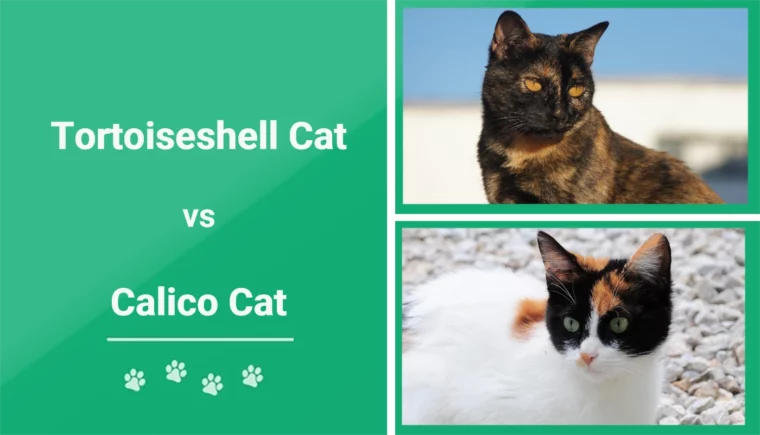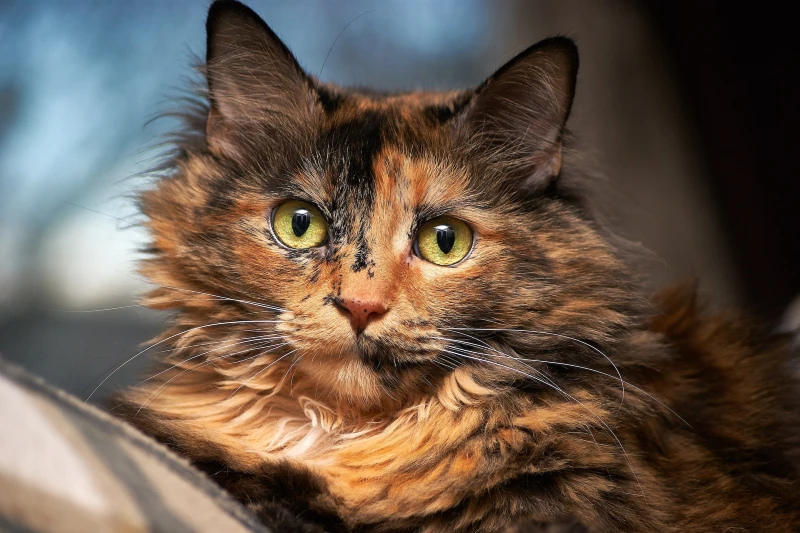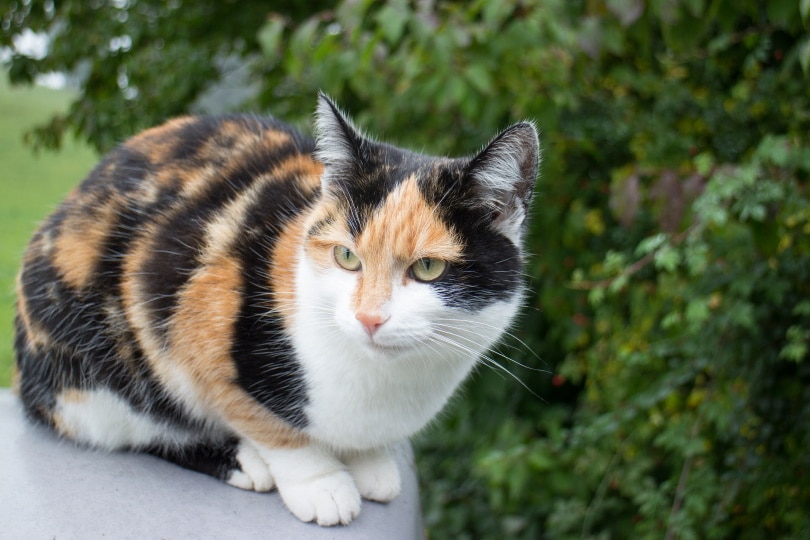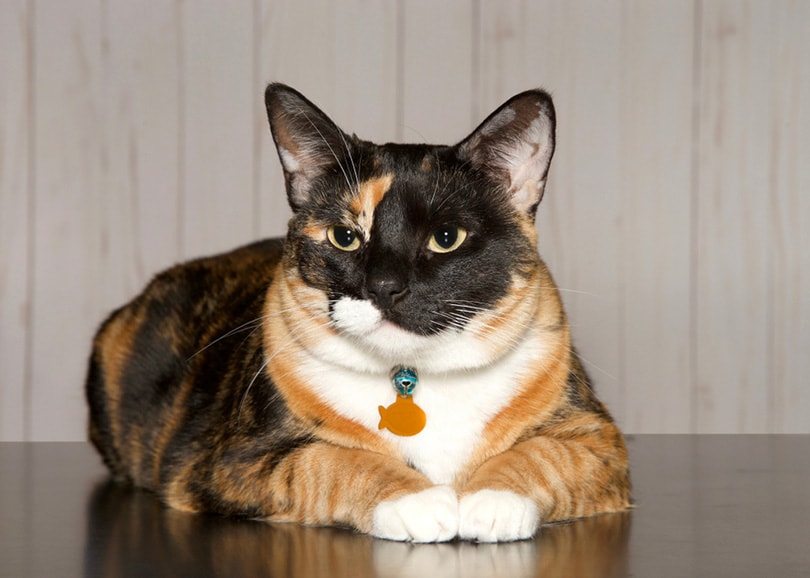
Some cat lovers get confused about the differences between the Calico cat and the Tortoiseshell cat breed. They are around the same height and weight and have the same life expectancy. They are both gorgeous and have striking appearances because of their unusual colors and markings.
While the cats have many similarities, they also have a few differences that will allow you to tell them apart. If you’re looking to adopt or purchase one of these cat breeds, we’ll tell you everything you need to know about each in the guide below, so you can make an informed decision on which cat is the best choice for you and your family.
Visual Differences

At a Glance
Tortoiseshell Overview
First, we’ll go into the Tortoiseshell Cat breed and give you an overview of what you need to know. We’ll talk about the Tortie’s appearance, health and care requirements, and personality in the sections below.

Appearance
The Tortie has a bicolor coat pattern and is usually orange and black but can include brown, tan, and red undertones. In some Torties, there can be found tiny patches of white. However, those patches are too tiny to qualify the cat as a Tortoiseshell.
Health & Care
Torties have a few health conditions that you’ll want to be on the lookout for. The biggest health problem is Klinefelter Syndrome, which is unique to Tortoiseshell Cats and only in male cats, as they are extremely rare. Most Torties are female. Other health concerns to look for are obesity and heart issues.
If you feel something is wrong with your Tortie, it’s best to make an appointment with your vet for a checkup to rule out any serious health concerns.

Personality
Tortoiseshell cats certainly have their own unique personalities. They are fiery, hot-tempered, and have quite a bit of attitude. In fact, Tortie lovers have a name for the attitudes their cats have. They say that their Torties have Tortitude.
Torties are also known to be quite a bit more aggressive than some cat breeds. Even with their Tortitude, these cats are fun, affectionate, and can be very loving to their pet parents.
Breeds of Torties
Tortoiseshell cats are not a specific breed of cat. Instead, it is a color pattern that can occur in several cat breeds.

Suitable for:
In most cases, the Tortie will have the grooming requirements, exercise requirements, and even the personality of the cat breed she’s born in. It is suitable for most families that appreciate the Tortie’s mischievous attitude. However, they might not be suited to every family, especially one with younger children. Torties may be less tolerant of small children and other pets, but with extensive training as kittens, they can learn to get along with them.
Calico Overview
We’ll discuss Calico’s appearance, health and care issues, personality, and more below.

Appearance
Calico Cats are a tri-colored breed. This means they consist of three colors: usually black, white, and orange. These colors stand out more and are more recognizable than the Tortoiseshell Cats. In most cases, Calicos have a 25% to 75% mix of white throughout their fur. Other possible colors include red, brown, tan, cream, and grey.
Every Calico has a unique color combination, and no two Calicos look alike.
Health & Care
Your little Calico Cat is susceptible to quite a few health problems. These include kidney disease, respiratory problems, and infections. Some Calicos suffer from stress and anxiety issues as well. As with the Tortie, if you suspect your Calico Cat has any of these conditions or displays troubling signs, it’s best to get the cat to a vet for a checkup, diagnosis, and possible treatment options.

Personality
Since the Calico Cat is a color pattern of several cat breeds, the cat’s personality can be a bit unpredictable. They have been known to be stubborn, feisty, and gentle. They also tend to have a more relaxed, even-tempered demeanor than the Tortie. They usually get along well with other pets and humans and are known for being affectionate, energetic, quirky, and sociable.
Breeds of Calicos
Here is a list of the most common cat breeds with Calico patterns.

Suitable for:
Calico Cats are gentle, affectionate, and suited for any family or individual. They are much more sociable and a lot more tolerant than the Tortie is. They are also loving and have great personalities, making it easy for them to get along with children and other animals.
Which Breed Is Right for You?
Both the Tortie and the Calico cat have gorgeous, unique color patterns, so choosing which cat would be best for you based on their appearance would be hard. Where the cats differ is in the personality department. However, both are sweet, loving, and energetic. The Tortie has a bit of a temper, and having her around other pets and small children is not a good idea.
The Calico, on the other hand, does well with pets, children, and other people in the household. If you’re looking for a cat to play with the kids, the Calico is probably your best choice. If you have no other pets or small children in your home, the Tortie may be the cat for you.
Featured Image Credit: Top – Tortoiseshell Cat (JPVasc, Pixabay) | Bottom – Calico Cat (FotoRain, Pixabay)






